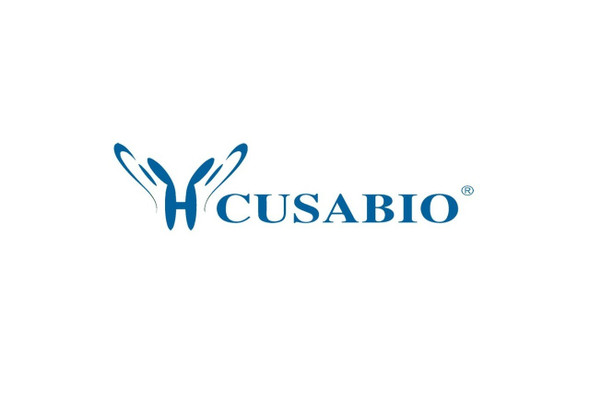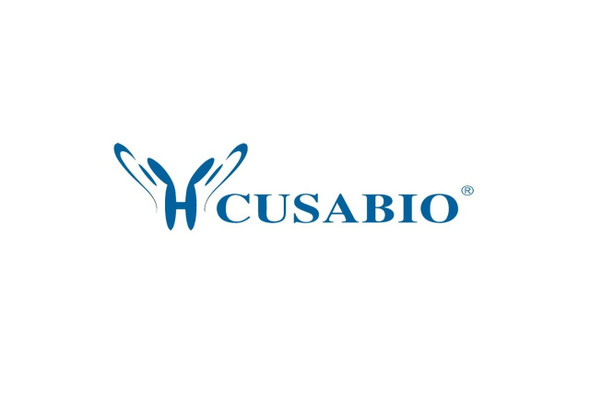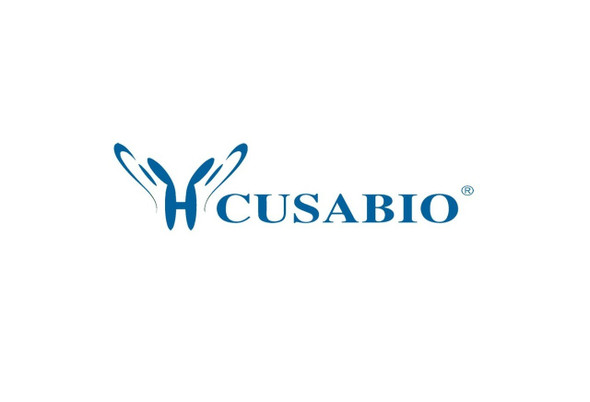Cusabio Mouse Recombinants
Recombinant Mouse Plasma serine protease inhibitor (Serpina5) | CSB-BP021061MO
- SKU:
- CSB-BP021061MO
- Availability:
- 3 - 7 Working Days
Description
Recombinant Mouse Plasma serine protease inhibitor (Serpina5) | CSB-BP021061MO | Cusabio
Alternative Name(s): Plasminogen activator inhibitor 3 Short name: PAI-3 Short name: PAI3 Protein C inhibitor Short name: PCI Serpin A5 Pci
Gene Names: Serpina5
Research Areas: Cancer
Organism: Mus musculus (Mouse)
AA Sequence: SKKKKAKESSVGAVGPPSSKDFAFRLYRALVSESPGQNVFFSPLSVSMSLGMLSLGAGLKTKTQILDGLGLSLQQGQEDKLHKGFQQLLQRFRQPSDGLQLSLGSALFKDPAVHIRDDFLSAMKTLYMSDTFSTNFGNPEIAKKQINNYVAKQTKGKIVDFIKDLDSTHVMIVVNYIFFKAKWQTAFSETNTHKMDFHVTPKRTTQVPMMNREDGYSYYLDQNISCTVVGIPYQGNAIALFILPSEGKMKQVEDGLDERTLRNWLKMFTKRRLDLYLPKFSIEATYKLENVLPKLGIQDVFTTHADLSGITDHTNIKLSEMVHKSMMEVEESGTTAAAITGAIFTFRSARPSSLKIEFTRPFLLTLMEDSHILFVGKVTRP
Source: Baculovirus
Tag Info: N-terminal 10xHis-tagged
Expression Region: 25-405aa
Sequence Info: Full Length of Mature Protein
MW: 45.3 kDa
Purity: Greater than 90% as determined by SDS-PAGE.
Relevance: Heparin-dependent serine protease inhibitor acting in body fluids and secretions. Inactivates serine proteases by binding irreversibly to their serine activation site. Involved in the regulation of intravascular and extravascular proteolytic activities. Plays hemostatic roles in the blood plasma. Acts as a procoagulant and proinflammatory factor by inhibiting the anticoagulant activated protein C factor as well as the generation of activated protein C factor by the thrombin/thrombomodulin complex. Acts as an anticoagulant factor by inhibiting blood coagulation factors like prothrombin, factor XI, factor Xa, plasma kallikrein and fibrinolytic enzymes such as tissue- and urinary-type plasminogen activators. In seminal plasma, inactivates several serine proteases implicated in the reproductive system. Inhibits the serpin acrosin; indirectly protects component of the male genital tract from being degraded by excessive released acrosin. Inhibits tissue-and urinary-type plasminogen activator, prostate-specific antigen and kallikrein activities; has a control on the sperm motility and fertilization. Inhibits the activated protein C-catalyzed degradation of SEMG1 and SEMG2; regulates the degradation of semenogelin during the process of transfer of spermatozoa from the male reproductive tract into the female tract. In urine, inhibits urinary-type plasminogen activator and kallikrein activities. Inactivates membrane-anchored serine proteases activities such as MPRSS7 and TMPRSS11E. Inhibits urinary-type plasminogen activator-dependent tumor cell invasion and metastasis. May also play a non-inhibitory role in seminal plasma and urine as a hydrophobic hormone carrier by its binding to retinoic acid
Reference: "Disruption of the protein C inhibitor gene results in impaired spermatogenesis and male infertility." Uhrin P., Dewerchin M., Hilpert M., Chrenek P., Schofer C., Zechmeister-Machhart M., Kronke G., Vales A., Carmeliet P., Binder B.R., Geiger M. J. Clin. Invest. 106:1531-1539(2000)
Storage: The shelf life is related to many factors, storage state, buffer ingredients, storage temperature and the stability of the protein itself. Generally, the shelf life of liquid form is 6 months at -20?/-80?. The shelf life of lyophilized form is 12 months at -20?/-80?.
Notes: Repeated freezing and thawing is not recommended. Store working aliquots at 4? for up to one week.
Function: Heparin-dependent serine protease inhibitor acting in body fluids and secretions. Inactivates serine proteases by binding irreversibly to their serine activation site. Involved in the regulation of intravascular and extravascular proteolytic activities. Plays hemostatic roles in the blood plasma. Acts as a procoagulant and proinflammatory factor by inhibiting the anticoagulant activated protein C factor as well as the generation of activated protein C factor by the thrombin/thrombomodulin complex. Acts as an anticoagulant factor by inhibiting blood coagulation factors like prothrombin, factor XI, factor Xa, plasma kallikrein and fibrinolytic enzymes such as tissue- and urinary-type plasminogen activators. In seminal plasma, inactivates several serine proteases implicated in the reproductive system. Inhibits the serpin acrosin; indirectly protects component of the male genital tract from being degraded by excessive released acrosin. Inhibits tissue-and urinary-type plasminogen activator, prostate-specific antigen and kallikrein activities; has a control on the sperm motility and fertilization. Inhibits the activated protein C-catalyzed degradation of SEMG1 and SEMG2; regulates the degradation of semenogelin during the process of transfer of spermatozoa from the male reproductive tract into the female tract. In urine, inhibits urinary-type plasminogen activator and kallikrein activities. Inactivates membrane-anchored serine proteases activities such as MPRSS7 and TMPRSS11E. Inhibits urinary-type plasminogen activator-dependent tumor cell invasion and metastasis. May also play a non-inhibitory role in seminal plasma and urine as a hydrophobic hormone carrier by its binding to retinoic acid (By similarity).
Involvement in disease:
Subcellular Location: Secreted, extracellular space
Protein Families: Serpin family
Tissue Specificity: Not detected in blood plasma (at protein level). Expressed in testis, epididymis, seminal vesicles, prostate and ovaries.
Paythway:
Form: Liquid or Lyophilized powder
Buffer: If the delivery form is liquid, the default storage buffer is Tris/PBS-based buffer, 5%-50% glycerol. If the delivery form is lyophilized powder, the buffer before lyophilization is Tris/PBS-based buffer, 6% Trehalose, pH 8.0.
Reconstitution: We recommend that this vial be briefly centrifuged prior to opening to bring the contents to the bottom. Please reconstitute protein in deionized sterile water to a concentration of 0.1-1.0 mg/mL.We recommend to add 5-50% of glycerol (final concentration) and aliquot for long-term storage at -20?/-80?. Our default final concentration of glycerol is 50%. Customers could use it as reference.
Uniprot ID: P70458
HGNC Database Link: N/A
UniGene Database Link: UniGene
KEGG Database Link: KEGG
STRING Database Link: STRING
OMIM Database Link: N/A










